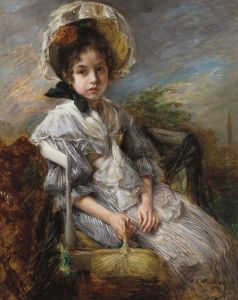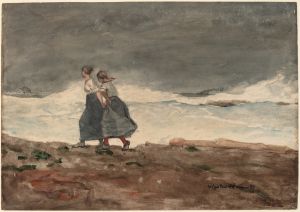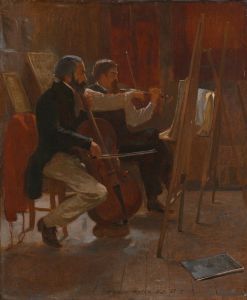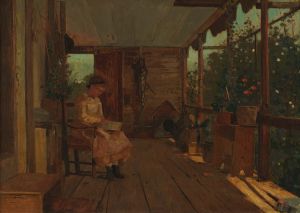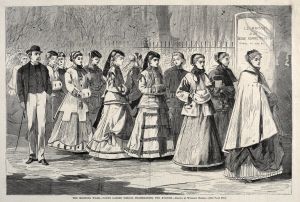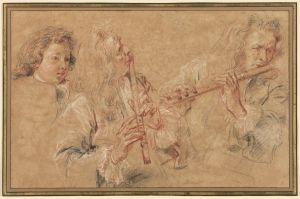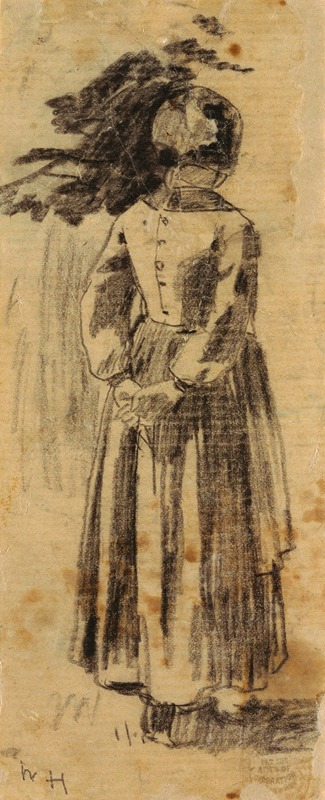
Girl
A hand-painted replica of Winslow Homer’s masterpiece Girl, meticulously crafted by professional artists to capture the true essence of the original. Each piece is created with museum-quality canvas and rare mineral pigments, carefully painted by experienced artists with delicate brushstrokes and rich, layered colors to perfectly recreate the texture of the original artwork. Unlike machine-printed reproductions, this hand-painted version brings the painting to life, infused with the artist’s emotions and skill in every stroke. Whether for personal collection or home decoration, it instantly elevates the artistic atmosphere of any space.
"Girl" is a painting by the American artist Winslow Homer, created in 1873. Winslow Homer (1836–1910) is renowned for his landscape paintings and depictions of American life, particularly his marine subjects. He is considered one of the foremost painters in 19th-century America and a preeminent figure in American art.
The painting "Girl" is an example of Homer's early work, which often focused on scenes of rural and domestic life. During the early 1870s, Homer spent time in Gloucester, Massachusetts, where he produced numerous watercolors and oil paintings that captured the essence of the New England coast and its inhabitants. This period marked a significant development in his artistic style, characterized by a greater emphasis on light and color.
"Girl" depicts a young girl in a simple, yet evocative setting. The composition is straightforward, focusing on the figure of the girl, who is the central subject of the painting. Homer's use of light and shadow, as well as his attention to detail, brings a sense of realism and immediacy to the scene. The girl's expression and posture convey a sense of innocence and contemplation, which is a recurring theme in Homer's work.
Homer's technique in "Girl" showcases his skill in watercolor, a medium he mastered and used extensively throughout his career. Watercolor allowed Homer to capture the subtleties of light and atmosphere, which are evident in the delicate rendering of the girl's features and surroundings. The painting's palette is soft and muted, enhancing the overall mood of tranquility and introspection.
The significance of "Girl" lies not only in its artistic merit but also in its representation of a specific moment in American art history. During the 19th century, there was a growing interest in depicting everyday life and ordinary people, moving away from the grand historical and mythological subjects that had dominated earlier art. Homer's work, including "Girl," reflects this shift and contributes to the broader narrative of American realism.
"Girl" is part of a larger body of work that illustrates Homer's versatility and his ability to capture the essence of his subjects with sensitivity and precision. His paintings from this period are celebrated for their authenticity and their ability to evoke a sense of place and time.
Today, Winslow Homer is remembered as one of America's greatest artists, and his works are held in high esteem by art historians and collectors alike. "Girl" remains an important piece within his oeuvre, exemplifying his early style and his commitment to portraying the beauty and complexity of everyday life.
In summary, "Girl" by Winslow Homer is a notable example of the artist's early work, showcasing his mastery of watercolor and his focus on depicting ordinary scenes with extraordinary skill. The painting captures a moment of quiet reflection, embodying the themes of innocence and contemplation that are central to Homer's artistic vision.







